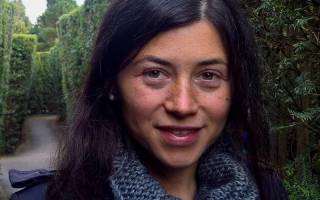Development and function of the social brain circuit


Tel: +44 020 7679 3348 or +44 020 7679 5711
Email: e.dreosti@ucl.ac.uk
Website: http://www.dreo-sci.com/
My lab investigates how the social brain circuit develops and what happens to it when something goes wrong. We use zebrafish as our animal model because they are social and completely transparent. We can monitor activity throughout the entire brain, with single cell resolution, from fertilization to the onset of social behaviour.
We have designed new behavioural assays to study social preference in young fish while presenting both real and virtual stimuli. We use a mix of anatomical (mapping of immediate early gene activation) and functional methods (two-photon calcium imaging) to monitor activity throughout the developing brain while we present social stimuli and monitor behavioural responses. Our projects are focused on identifying the neural circuit underlying social preference and characterizing the influence of genetic and environmental perturbations during early life.
- Academic Career
- August 2016 - Present Sir Henry Dale Wellcome Trust Fellow
- January 2010 - July 2016 Sir Henry Wellcome Trust Fellow, Division of Life Sciences, University College London, United Kingdom.
- September 2006 - 2010 PhD in Neuroscience, Division of Neuroscience, Laboratory of Molecular Neuroscience MRC, Cambridge, United Kingdom
- Publications
Dreosti E, Lopes G, Kampff AR and Wilson SW (2015) Development of social behaviour in young zebrafish.Front. Neural Circuits 2015 Aug 18;9:39. doi: 10.3389/fncir.2015.00039. PMID: 26347614
Lopes G, et al. (2015) Bonsai: an event-based framework for processing and controlling data streams. Front Neuroinform. Apr 8;9:7. doi: 10.3389/fninf.2015.00007. PMID: 25904861
Baden T, Nikolaev A, Esposti F, Dreosti E, Odermatt B, Lagnado L. (2014) A synaptic mechanism for temporal filtering of visual signals. PLoS Biol. Oct 21;12(10):e1001972. doi: 10.1371/journal.pbio.1001972. PMID: 25333637
Hüsken U, et al. (2014) Tcf7l2 is required for left-right asymmetric differentiation of habenular neurons. Curr Biol. Oct 6;24(19):2217-27. doi: 10.1016/j.cub.2014.08.006. PMID: 25201686
Dreosti E, Vendrell Llopis N, Carl M, Yaksi E, Wilson SW (2014) Left-right asymmetry is required for the habenulae to respond to both visual and olfactory stimuli. Curr Biol. 17;24(4):440-5. doi: 10.1016/j.cub.2014.01.016.PMID: 24508167
Dreosti E, Esposti F, Baden T, Lagnado L. (2011) In vivo evidence that retinal bipolar cells generate spikes modulated by light. Nat Neurosci. Jun 26;14(8):951-2. doi: 10.1038/nn.2841. PMID: 21706020
Publication information can also be viewed at
- Group members
Research Fellow
Dr Tom RyanResearch Technician
Hande TunbakPhD Students
Alizee Kastler (Marie Curie PhD Student)
 Close
Close

